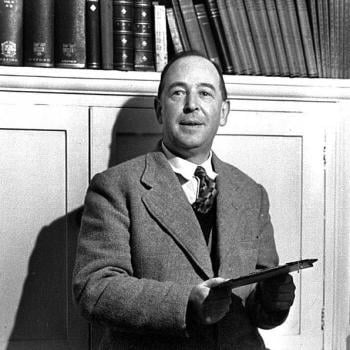I quite randomly came across a fascinating article at a Jewish site, TheTorah.com, about the nature of blasphemy and why it incurred the death penalty under Levitical law.
The article, by Johns Hopkins Near Eastern Studies professor Theodore J. Lewis, is entitled Blasphemy: Piercing God’s Name, with the deck, “Cursing YHWH is more than simply expressing contempt and irreverence. In the biblical world view, it is attempted deicide, and thus is punishable by death.”
And to the Israelite people speak thus: “Whoever curses his God shall bear his sin. And whoever blasphemes (lit. pierces) the name of YHWH shall surely be put to death. The entire community shall certainly stone him, the migrant as well as the native born. When he blasphemes (lit. pierces) the name (of YHWH), he shall be put to death.”
Lewis raises the question, “What does it mean to pierce a name, and why would it incur the severity of capital punishment?” A person’s name is expressive of one’s identity, and in the ancient world especially it was connected to the person’s essence and very existence.
He relates all of this to cursing. People cursed the name of an enemy. And they often cursed with the name of a deity, which was thought to carry effectual force. To curse the name of a deity, perhaps with the name of a rival deity, was to strike out hatefully at the god and everything he stood for.
Lewis also shows how the imagery of “piercing” can be found in ancient mythology, in which the various deities are fighting with each other. Some of this is alluded to in the imagery of the Bible, to describe the Lord’s defeat of idolatrous gods, as when it is said of the Lord’s contention with the mythological monster Behemoth that God will “pierce his jaw with a barb,” something that a mere mortal cannot do (Job 40:26).
Lewis concludes that blaspheming and cursing a god represents deicide, an attempt to kill the god. He concludes,
The blasphemer’s attempted deicide helps answer the question of why his crime would incur the severity of capital punishment. The performative cursing is deadly serious, entirely different in degree from Job’s use of caustic words to challenge God and His nature (Job 16:6–14).[23] Raymond Westbrook and Bruce Wells state succinctly:
Blasphemy was essentially the act of putting a curse—or attempting to put a curse—upon a deity. It was the ultimate act of rebellion.[24]
The content of the blasphemous curse—using the language of “piercing” YHWH’s Name—is that of deicide, and the illicit means—the attempted appropriation of YHWH’s power for this most extreme act—constitutes an additional act of rebellion.[25] In response to such an act of killing, lex talionis law would require capital punishment.[26] Thus the blasphemy narrative (Lev 24:10–14, 23), and the resulting punishment (vv. 13, 23), are positioned within the context of lex talionis laws of commensurate retribution with respect to killing. . . .
We could argue that the blasphemer’s act was an act of attempted killing, for God was indeed not killed due to the man’s words. Yet effectual words were perceived to be powerful and even lethal. Thus, to write anachronistically, the man had discharged what he considered to be a lethal weapon in committing his crime. In criminal law, his intention to kill and his overt actions using a lethal means make him guilty of an indictable offense that carries a maximum penalty.
This is a fascinating scholarly discussion, but since it comes from a Jewish perspective, it stops short of the most significant application: the piercing of Jesus on the cross:
“They have pierced my hands and feet” (Psalm 22:16).
“One of the soldiers pierced his side with a spear, and at once there came out blood and water. (John 19:34)
The piercing of the Son of God was a true blasphemy, indeed, a true deicide, a successful killing of God. This was the ultimate rebellion, the ultimate sin. And yet, God received this assault against Himself and transmuted it into atonement:
He was pierced for our transgressions;
he was crushed for our iniquities;
upon him was the chastisement that brought us peace,
and with his wounds we are healed. (Isaiah 53:5)
And then the blasphemed, murdered God rose from the dead. The Apostle John sees the spearing of Jesus in light of prophecy: “Another Scripture says, ‘They will look on him whom they have pierced’” (John 19:37). He is citing the reconciliation predicted by the prophet Zechariah:
“And I will pour out on the house of David and the inhabitants of Jerusalem a spirit of grace and pleas for mercy, so that, when they look on me, on him whom they have pierced, they shall mourn for him, as one mourns for an only child, and weep bitterly over him, as one weeps over a firstborn. (Zechariah 12:10)
Just as God’s wrath against sinners is turned into grace and mercy, the sinners’ wrath against God is turned into compassion for Him!
Similarly, what Lewis says about cursing is transfigured by Jesus:
Christ redeemed us from the curse of the law by becoming a curse for us—for it is written, “Cursed is everyone who is hanged on a tree” (Galatians 3:13; referencing Deuteronomy 21: 22-23)
Sinners cursed Christ; sinners are cursed for violating God’s Law. Christ became a curse for us. He was cursed by God (Deuteronomy 21:23). This “redeemed us from the curse of the law.”
Illustration: The Fountain of Grace by Lawrence, OP: Detail from a painting c.1470/80 in Washington DC’s National Gallery by the ‘Master of the Death of St Nicholas of Münster’ via Flickr, CC BY-NC-ND 2.0













